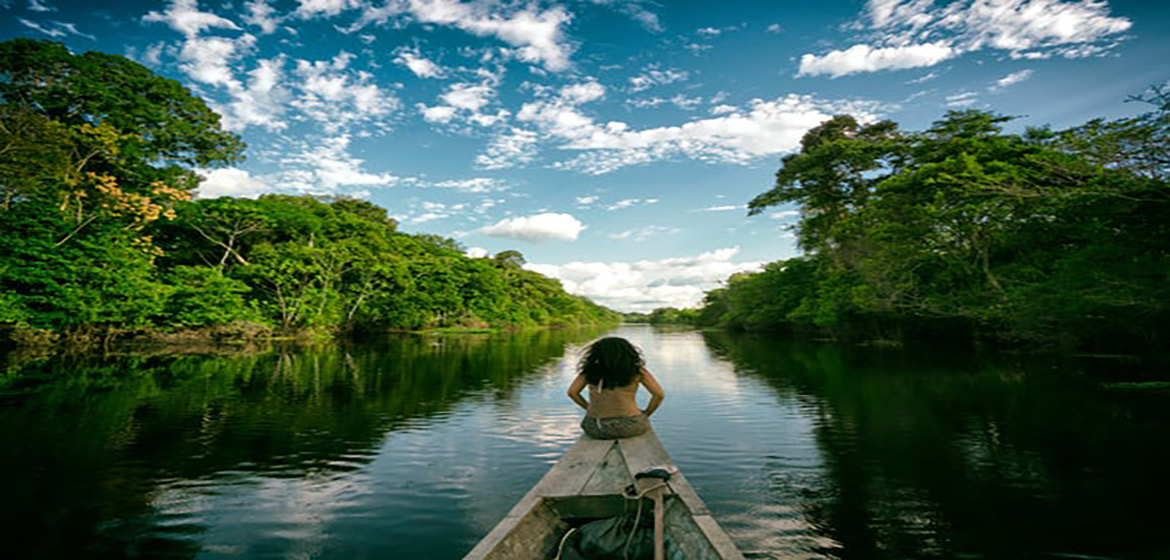To succeed, supporters of an ambitious new conservation target must press national governments to recognize the land rights of Indigenous peoples
By Michelle Nijhuis
Representative Deb Haaland, who is expected to be sworn in as President Biden’s new secretary of the interior next week, already faces a pressing deadline. Under the wide-ranging on climate change that Biden signed during his first full week in office, the interior secretary has until the end of April to recommend steps that the United States should take “to achieve the goal of conserving at least 30 percent of our lands and waters by 2030.”
The goal of protecting 30 percent of the planet by 2030—known as “”—is the latest iteration of a longstanding conservation pipe dream, but Biden is not the only world leader now taking it seriously. Thanks in part to a $1 billion campaign funded by Swiss medical technology entrepreneur Hansjörg Wyss and endorsed by the National Geographic Society and the Nature Conservancy, the 30 by 30 goal was formally adopted in January by the newly formed High Ambition Coalition for Nature and People, which includes more than 50 countries from six continents. The coalition members, led by the United Kingdom, Costa Rica and France, are urging their fellow signatories to the Convention on Biological Diversity to embrace the target, too.
There is persuasive evidence that far-reaching protections for the planet’s remaining forests, grasslands, wetlands, coastal marshes and other ecosystems are urgently needed, not only to prevent the further decline and extinction of other species but to stabilize the global climate. Yet the 30 by 30 goal is viewed with justifiable suspicion by many antipoverty and Indigenous rights activists, who know that parks and other protected areas frequently obliterate local land claims and livelihoods. From the Yellowstone and Yosemite national parks to the world’s newest forest and marine reserves, history shows that the price of “protection” (or “conservation,” the term used in Biden’s executive order) is often paid by vulnerable people.
To achieve effective and ethical conservation at a global scale, the 30 by 30 campaigners must continue to broaden the conservation movement’s definition of protection.
Conservationists and the scientists who inform their work are experts in ecological complexity, with a deep understanding of the interconnections among species, habitats and the global climate. But in general, they have long been less sensitive to human complexity. They’ve tended to see humans as a largely uniform and destructive force, an assumption that underlies more than a century of attempts to protect ecological relationships by keeping humans at a distance.
Meanwhile, social scientists—experts in human complexity—have learned that under the right conditions, humans are perfectly capable of playing a constructive role in conservation. Many societies, in fact, have developed ways of both sustaining their livelihoods and the ecosystems they live within. In some cases, these practices are even better at protecting species and habitats than traditional park boundaries, which after all are costly to enforce. But this kind of ecological protection is typically carried out on community land—the that is collectively held, de facto if not de jure, by Indigenous and other local communities. Without formal, legally recognized land ownership, these communities can be, and often are, disrupted or displaced by industrial development.
Formal recognition of these land claims is an essential step toward restoring authority and responsibility to those whose survival often depends most directly on functioning ecosystems, and toward providing the security communities need to manage their resources for the long term. (In cases where new park boundaries may be warranted, recognition of land rights can also enable equitable negotiations between communities and national governments—itself a major departure from history.)
Of course, Indigenous communities and Indigenous people have a variety of ambitions for their lands, and not all are interested in prioritizing conservation. And Indigenous communities should certainly not be expected to shoulder the costs of conservation for the rest of humanity. But research and experience show that given sufficient resources and support, community management can be extremely effective, and key to meeting broader conservation goals.
Haaland, a member of the Laguna Pueblo and the nation’s first Native American Cabinet secretary, is surely well aware that recognition of historical land claims can advance conservation in the U.S. as well as abroad. In January, for example, the land and management of the National Bison Range in Montana were formally transferred to the Confederated Salish and Kootenai Tribes, whose legal claim to the range dates back to an 1855 treaty with the United States. The Salish and Kootenai will be primarily responsible for the range and its inhabitants, and the bison will be integrated into an ongoing, tribal-led effort to restore bison across the North American prairie.
To their credit, many advocates of the 30 by 30 goal have acknowledged the importance of what the Wyss Campaign for Nature calls “supporting Indigenous peoples and promoting Indigenous led conservation.” But as 30 by 30 moves forward, this support must involve real resources and lead to real transfers of power. For while boundaries and barriers can be useful, and will continue to be, the protection of the planet’s ecological complexity requires the full participation of our own species—in all its complexity.
This is an opinion and analysis article.
Source:
Related to SDG 10: Reduced inequalities and SDG 15: Life on land



